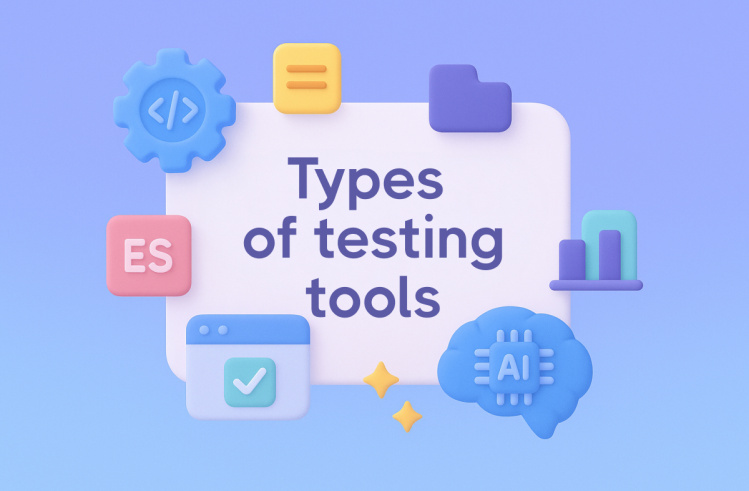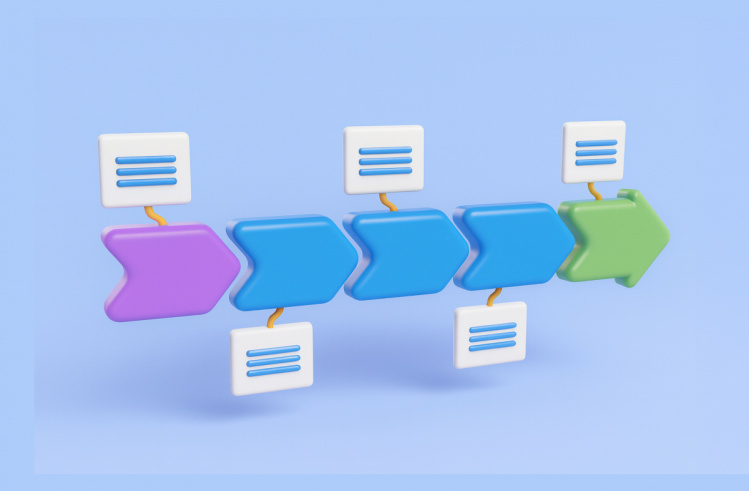The quality in Agile and DevOps depends completely on the effectiveness of team member communication. When teams get immediate exchange of test results and feature details, it helps them detect problems faster. Furthermore, the ongoing feedback allows them to minimize delays and improve the quality of every iteration. With Slack MCP, developers and testers can maintain open and fast communication, receive immediate notifications and quickly resolve issues. In the article below, you can discover how the Slack MCP Server integrates into the testing workflow and connects the Testomat.io test management system for AI-based insights and real-time communication.
Why Slack is Essential for the QA Workflow and 3 Amigos Collaboration
Slack operates as a team communication platform, which is Salesforce-owned, to provide real-time messaging, video conferencing, and file exchange capabilities. The platform enables teams to communicate instantly through public channels and private channels, which support real-time teamwork. Slack enables businesses to create customized workflows through its tool integrations, which allow teams to share workspaces across organizational borders.
When we talk about modern QA workflows, many development teams use Slack as a collaboration platform, which helps them significantly streamline communication and simplify collaboration among engineers, QAs, and product teams. Basically, it is helpful in:
- Accelerating the continuous feedback loop.
- Sharing bug reports and automated test results immediately with everyone.
- Automating the notifications for CI/CD status and deployment alerts which eliminates the need to check multiple dashboards.
- Discussing requirements and clarifying acceptance criteria before development starts to facilitate the 3 Amigos Collaboration.
What Is Slack MCP Server?
The Slack MCP Server Model Context Protocol functions as an integration platform which enables AI assistants, including Claude or ChatGPT, to access Slack workspaces through the Model Context Protocol (MCP). The Model Context Protocol (MCP) serves as a standardized communication system, which enables applications to deliver context information to large language models while connecting AI agents to different tools and data sources.
The MCP Slack Server enables users to perform multiple critical operations through its functionality:
- It enables channel management, message posting, thread handling, reaction adding, workspace statistics and user information retrieval, and fetch message history from channels and threads.
- It enables users to search messages across channels, direct messages and threads through query-based searches with multiple filter options, including channel selection, user selection and date range capabilities.
- It allows users to send direct messages, group direct messages and retrieve historical messages through smart history fetching (by date/count).
Why Slack Matters
The MCP Server Slack enables AI assistants to join Slack workspaces as active team members, interacting with workspace components in real-time. It also enables teams to use AI tools directly within their current collaboration workflow, while enabling AI models to access and modify team tools through MCP and become active participants in workflow operations:
- AI-based Summaries. AI models are good at converting extensive conversation threads into brief summary reports, which eliminates the need for human readers to review the content.
- Context-Aware Record Keeping. An AI-based system can extract decision information from Slack conversation history to create searchable documentation that includes all decision details and responsible parties.
- Smart QA Decisions. The server merges conversational data with technical information from automated test result reports to create an integrated system. The AI system uses test failure data to link with previous discussions and ticket records to produce an intelligent report which identifies essential problems from normal test variations for immediate quality assessment.
Traditional Slack Notifications Vs Smart AI-based Assistant Within The Testing Workflow
While the traditional Slack notification system sends test failure alerts, which require users to perform manual investigation and tool switching, a smart AI assistant can understand context, enabling users to access immediate information and perform actions through Slack, and can provide interactive intelligence that helps identify failed commits and summarizes logs. Let’s discover more details in the comparison table:
| Feature | Traditional Slack Notifications | Smart AI Assistant |
| Core Function | It operates as a passive alerting system. | It performs active issue triage while working together with the team members. |
| Information | The system shows you what occurred during the event and reports that 11 tests failed during the process, for example. | It demonstrates the importance of the issue while showing its relationship to current work activities. |
| Issue Assessment | It needs human analysis to stop work activities because team members need to investigate incidents and gather context before determining their next actions. | It evaluates system failures through comparison with previous code changes while searching for existing backlog problems and establishing severity levels between new system failures and unstable system behavior. |
| Access to information | It accesses separate data sources to generate reports about single events from test suite logs. | It links failure data to deployment records, pull requests, component ownership and recent Slack conversations. |
| Prioritizing Information | All team members receive identical notifications, which results in notification fatigue for the team. | It removes unimportant data to show only the most important problems. |
| The Ability to Learn | It handles each failure as an independent and separate issue. | It uses past team choices to enhance its alert system and recommendation engine through decision learning. |
Testomat.io Notification Feature In Slack, Flexible Settings, And Its Benefits
Testomat.io enables Slack notification integration, so that teams can track testing status through their Slack channel feed by receiving instant updates about tests, instance execution results, and GitHub entity changes. It also enables them to customize notification content through advanced configuration options, which determine when and how teams receive updates:
- The rule-based system enables teams to create specific alert rules which provide detailed control and minimize unnecessary alerts through templated data delivery to appropriate recipients.
- When desired triggers have been met, the system shares complete test summaries in Slack after run completion, whether through manual or CI/CD execution, along with a link to access the full report for quick analysis.
- The notification system provides users with multiple delivery options through Slack and email and Teams, and Jira, so they can establish specific alert routes based on environment types and failure severity levels.
What Are The Benefits For QA Teams
- By reducing context switching, teams can get direct access to test results through their current workspace, thus avoiding dashboard checks and maintaining their workflow continuity.
- With immediate response to CI/CD failures through real-time alerts, there is a possibility to decrease the Mean Time to Detection (MTTD) for essential problems.
- Thanks to specific rules, which are applied to filtering out non-essential alerts, teams get important alerts, removing notification overload.
- The practice of sharing test results through Slack channels enables teams to start discussions about fixes and document their actions within the same thread.
- Thanks to public report linking, stakeholders are provided with easy access to testing information available without system access permissions.
Integrating MCP Server for Slack Into the QA Workflow
When integrating automated test runs, CI/CD pipelines, and a bug tracking system, it produces extensive data that modern QA workflows need to process. The current reporting methods force QA teams to spend time understanding results, which leads to project delays and team members working without proper alignment.
Only by integrating Slack remote MCP Server with Testomat.io and Claude AI assistant can teams build an intelligent QA workflow that provides relevant context.
Process Looks Like:

- Test Management System (Testomat.io). The system generates alerts together with complete test execution reports, which get delivered to Slack channels for instant access to test results, failure data and test coverage metrics.
- MCP Servers. The system operates in real time to gather test data, which enables AI analysis through its ability to combine vital information from multiple sources, including logs, stack traces, Slack data and metadata.
- Claude (AI Assistant). It analyzes the processed data to generate summaries, root cause insights, and actionable recommendations, and then posts this meaningful guidance back into Slack.
The workflow establishes a feedback system which revolutionizes communication methods among QA team members. The system delivers full test data to Slack users who can monitor status updates, failure reports, and establish immediate priority settings. It optimizes decision processes, which leads to faster development cycles that produce superior software quality and enhanced team performance.
Slack in the Testing Workflow
Below, you can find out how this messaging platform fits into each of the testing phases:
- Execution. The test execution process sends instant notifications through Slack channels, which provide teams with immediate access to test start and end events and failure occurrences.
Reporting. The AI produces detailed analysis reports, which appear in Slack channels together with test results and essential logs. - Collaboration. The immediate availability of all necessary data in Slack enables QA engineers and developers, and project managers to discuss issues right away, which shortens the time needed to switch between different tools.
- Retrospective. The AI produces easy-to-understand reports, which help teams understand testing patterns and results to detect performance issues and enhance their workflow and make evidence-based choices for upcoming sprints.
Role of Test Management System in Planning, Syncing Test Plans And User Stories From Jira-Testomat.io
AI Test Case Management system Testomat.io is a good solution, which allows teams to link requirements, execute, and provide well-organized reports across QA and development teams.
Syncing Test Plans And User Stories
- Jira synchronization. Testomat.io TMS receives instant updates from Jira when teams change the status of the items. Similarly, this sync allows teams to create bugs in Jira directly from failed test runs in the TMS.
- Automation Integration. Testomat.io TMS creates Jira bugs automatically from failed test runs, which eliminates the need for manual updates and keeps all stakeholders informed.
Planning for Establishing Traceability
- Test Case and Plan Management. With the TMS system, test cases and test plans can be organized in one place and grouped logically according to project strategy or feature set.
- Requirements Linking. Thanks to TMS, teams can establish connections between user stories in Jira issues and test cases, which enables complete requirement coverage and traceability.
As you see, teams can establish direct links between all functional elements and their corresponding business objectives, making sure each function is tested and tied directly to a business goal.
Testomat.io and Jira Sync enable teams to:
- Connect each test case to its corresponding Jira ticket, which enables direct tracking of acceptance criteria to test execution results.
- Change ticket status or add failure comments to related tests based on real-time test execution results, and return results to Jira automatically.
- Generate test cases automatically when new user stories enter a sprint development phase, which helps QA teams begin the testing process quickly.
- Monitor user story test coverage levels through Jira’s interface, which shows both protected and vulnerable stories.
Also, you need to mention that the integration increases when you combine Claude with MCP servers for both Atlassian’s Jira and AI test management system Testomat.io.
Using Slack MCP Server: Metrics That Matter Most for Teams
Enhanced Transparency Of The Process
The entire team, including QAs, senior leaders, and all stakeholders, receives immediate updates about test performance. The team maintains complete product quality status awareness through shared understanding, which prevents anyone from missing important updates.
Minimized Workflow Interruption
Team members access all test results and relevant context through their current workspace, so they can avoid dashboard checking and external test management tool switching. Using Slack MCP Server helps teams stay focused and productive.
Fast Feedback
The AI system actively analyzes test data to generate relevant information, which it sends directly to Slack for team members to access. Therefore, teams can make quick decisions while resolving problems through a single platform, which establishes a fast feedback loop and ensures continuous improvement.
Faster Decisions and Quicker Resolution
The AI system conducts immediate failure analysis to provide teams with essential data needed for quick problem resolution. Based on the provided immediate root cause suggestions, teams can dedicate more time to fixing problems instead of spending time on investigations.
Streamlined Teamwork
Test results along with their corresponding details are posted through Slack channels, which creates a transparent environment for QA, Development, and Product Management teams to discuss issues. Thanks to this unified approach, all involved parties better understand both the problem and the solution path and get a complete record of all decisions and actions.
Better Traceability
The test requirements establish direct connections to each test, which creates a complete audit and allows tracking requirements from their origin to verification completion. Thanks to the Slack MCP Server integration, features that need attention are pinpointed through the identification of failing tests.
Bottom Line: Want to integrate Slack MCP Server and make your QA workflow smarter and more transparent?
Using the Slack MCP Server provides b links between testing processes and teamwork activities. When real-time data is combined with decision records and summary reports, it creates a single platform for transforming QA communication, which starts from basic status updates and finishes with active problem resolution. Not only does it help teams get access to essential noise-free information, but it can also enable them minimize their data search duration and dedicate their full attention to quality enhancement activities. Contact our team if you need more details on how to make the testing workflow smarter through Slack MCP Server integration.








